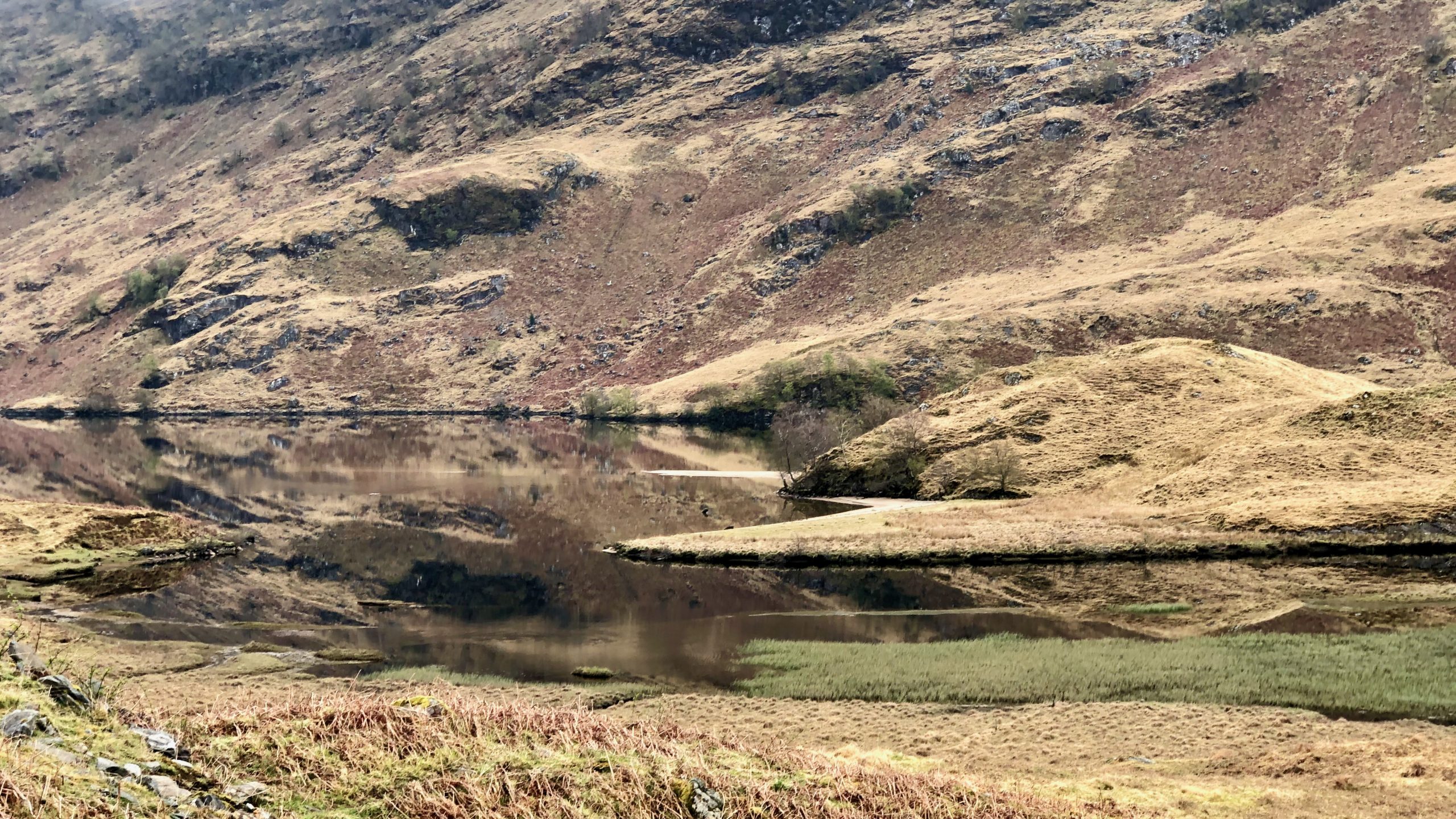Out and about on my own stamping grounds this morning, and the bank holiday meant that Roseberry was bustling with activity. So instead of sharing yet another snapshot of the popular hill, I figured I’d post one from my recent Scottish escapade. Loch Arkaig has a fascinating snippet of history just itching to be told. Don’t worry, Roseberry will still be there for us tomorrow!
As we arrived back at Strathan, the head of the loch, where our car was parked, the tranquil waters had transformed into a mesmerizing mirror, reflecting the beauty of the surrounding hillside. It was a breathtaking sight and a moment that has etched itself into my memory.

Legends abound about an elusive stash of treasure hidden deep within the vicinity of Loch Arkaig. It’s said that a vast amount of gold in the form of specie or coins, which was gifted by Spain to fund the Jacobite rising in Scotland back in 1746, still lies concealed on the surrounding hillside or maybe in the dark waters. Many have searched for this hidden trove over the years, but to no avail. Will the glittering hoard ever be found? The mystery continues to captivate and enthrall adventurers and treasure hunters alike.
In 1745, Bonnie Prince Charlie made his way to Scotland from France and declared his father James Stuart (the Old Pretender) as the rightful monarch of Scotland, England, and Ireland. Despite Charles’ claims of having the support of King Louis XV of France and the imminent arrival of French forces in Scotland, France was reluctant to intervene on behalf of the Stuarts. Nevertheless, Spain and the Pope provided some modest financial assistance.
Spain promised to contribute around 400,000 livres every month to support the Jacobite cause. However, the challenge was to ensure that the funds reached the rebel army. In 1745, an initial payment was sent out. The French sloop, Hazard (later renamed the Prince Charles), managed to deliver the money to the west coast of Scotland. Regrettably, the wealth was soon seized by Clan Mackay, who were supporters of King George II, causing a setback for the Jacobites.
In April of 1746, the vessels Mars and Bellona sailed to Scotland carrying a sum of 1,200,000 livres, consisting of a Spanish payment and a generous French contribution. However, upon receiving news of the Jacobites’ defeat at the Battle of Culloden on April 16th, the ships departed without unloading any of their cargo, except for the Spanish money, which was landed at Arisaig on April 30th. Consequently, Scotland only received seven chests of Spanish gold. Given that the Jacobite cause was lost by that point, with the army dispersed and the prince and his officers in hiding, the funds were intended to support the Jacobite clansmen and assist key Jacobite figures in escaping to the continent.
After one of the six caskets was stolen, the remaining five were transported to Loch Arkaig and concealed. The task of distributing the gold was assigned to Murray of Broughton, who was among the Jacobite fugitives. Murray had begun the process when he was captured by the government. He later turned state’s evidence. The responsibility of safeguarding the treasure was then transferred to Lochiel, the chief of Clan Cameron, and subsequently to Ewen MacPherson, who headed Clan Macpherson. Cluny, who was in hiding in a cave at Ben Alder, known as “the cage,” was entrusted with the treasure. After Charles briefly joined him in the hideout, Cluny maintained control of the money, which was still concealed at Arkaig.
In September 1746, Charles managed to escape Scotland aboard the French frigate L’Heureux and return to France. However, the whereabouts of the money is uncertain. It is believed that Cluny maintained control of the funds and attempted to finance another uprising through various unsuccessful schemes while in hiding for the next eight years in his Highland “cage.” Charles, who was in dire financial straits, searched tirelessly for the money, but only received some of it later, which he used to mint a campaign medal in the 1750s. Nevertheless, it is rumored that all of the gold was never found, and Charles would later accuse Cluny of embezzlement. The surviving Jacobites regarded the gold as a cause of discord and resentment.
Archibald Cameron was sent to Scotland in 1753 to search for treasure while serving as secretary to the Old Pretender. However, during his stay near Loch Katrine, where he was in hiding, he was betrayed and apprehended. As a result of his involvement in the 1745 uprising, he was charged, convicted, and sentenced to death. On 7 June 1753, he was drawn and hanged at Tyburn.
After the trail runs cold, there is still a glimmer of hope for discovering what happened to the missing monies. The Stuarts’ papers, which are now owned by the Crown, contain a wealth of information regarding the fate of the funds. Among the Highland chiefs and Jacobites in exile, there were numerous claims, counter-claims, and accusations recorded. Furthermore, Archibald Cameron compiled an account in Rome circa 1750, which suggests that Cluny either did not or could not account for all of the gold. In the 1850s, Clan Cameron records show that some French gold coins were unearthed in nearby woods.
Source: Wikipedia. 2022. ‘Loch Arkaig Treasure’ <https://en.wikipedia.org/wiki/Loch_Arkaig_treasure> [accessed 1 May 2023]

Leave a Reply